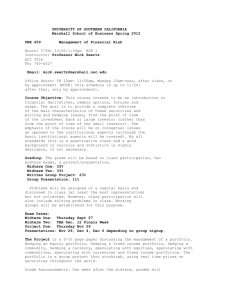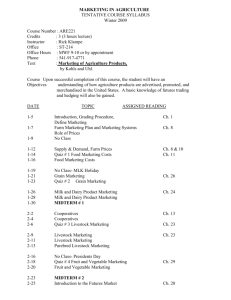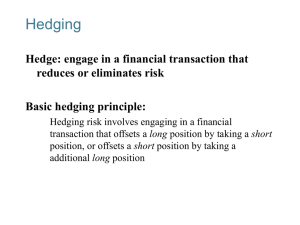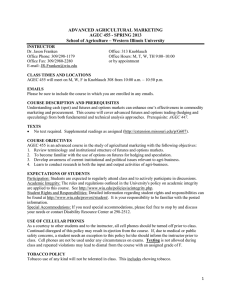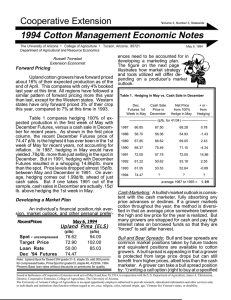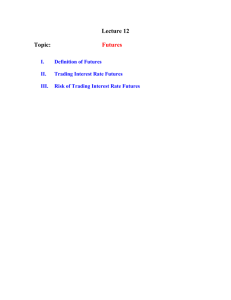Taxation Tidbit Hedging And Speculating - Tax Issues
advertisement
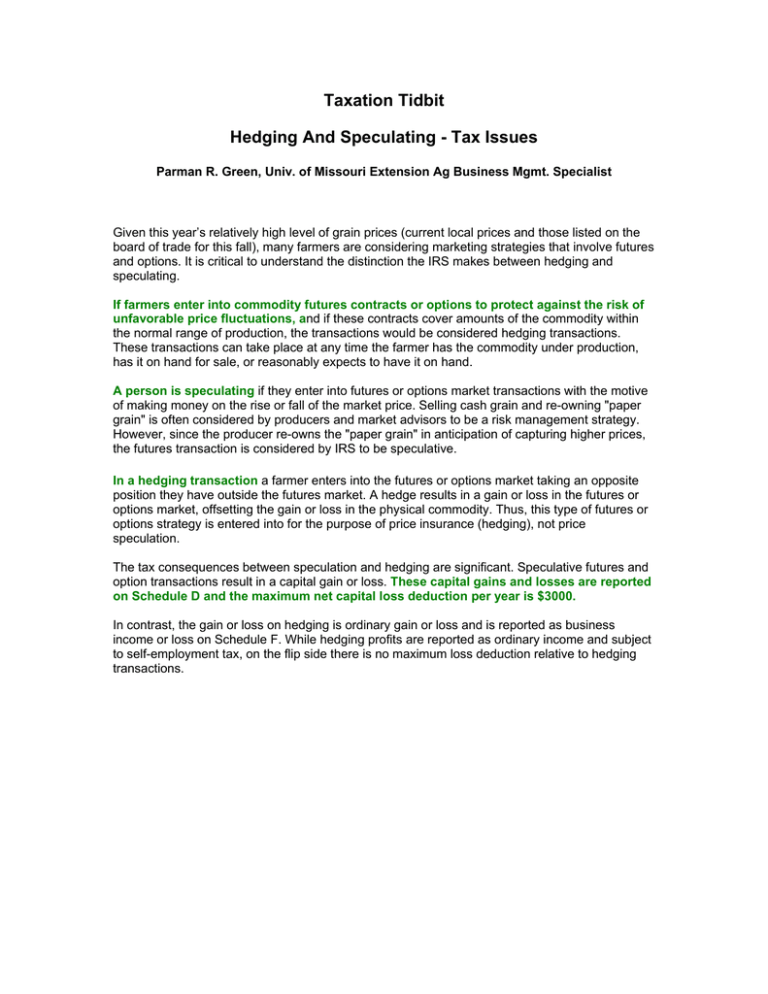
Taxation Tidbit Hedging And Speculating - Tax Issues Parman R. Green, Univ. of Missouri Extension Ag Business Mgmt. Specialist Given this year’s relatively high level of grain prices (current local prices and those listed on the board of trade for this fall), many farmers are considering marketing strategies that involve futures and options. It is critical to understand the distinction the IRS makes between hedging and speculating. If farmers enter into commodity futures contracts or options to protect against the risk of unfavorable price fluctuations, and if these contracts cover amounts of the commodity within the normal range of production, the transactions would be considered hedging transactions. These transactions can take place at any time the farmer has the commodity under production, has it on hand for sale, or reasonably expects to have it on hand. A person is speculating if they enter into futures or options market transactions with the motive of making money on the rise or fall of the market price. Selling cash grain and re-owning "paper grain" is often considered by producers and market advisors to be a risk management strategy. However, since the producer re-owns the "paper grain" in anticipation of capturing higher prices, the futures transaction is considered by IRS to be speculative. In a hedging transaction a farmer enters into the futures or options market taking an opposite position they have outside the futures market. A hedge results in a gain or loss in the futures or options market, offsetting the gain or loss in the physical commodity. Thus, this type of futures or options strategy is entered into for the purpose of price insurance (hedging), not price speculation. The tax consequences between speculation and hedging are significant. Speculative futures and option transactions result in a capital gain or loss. These capital gains and losses are reported on Schedule D and the maximum net capital loss deduction per year is $3000. In contrast, the gain or loss on hedging is ordinary gain or loss and is reported as business income or loss on Schedule F. While hedging profits are reported as ordinary income and subject to self-employment tax, on the flip side there is no maximum loss deduction relative to hedging transactions.



